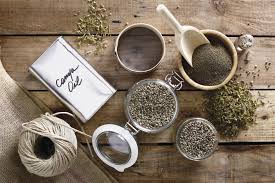Homemade Weed Killer Recipe, Weeds can be the bane of any gardener’s existence, often popping up uninvited and competing with your plants for nutrients and space. While there are numerous commercial weed killers available, many of them contain harsh chemicals that can be detrimental to the environment and your garden. If you’re looking for a safer, more eco-friendly alternative, consider making your own homemade weed killer. Not only can this be a more sustainable option, but it can also be cost-effective. Here’s a guide to creating an effective homemade weed killer recipe that can help you maintain a beautiful, weed-free garden.
Ingredients for Homemade Weed Killer
1. Vinegar
Vinegar is a powerful weed killer due to its acetic acid content, which can desiccate and kill weeds. White vinegar or apple cider vinegar can be used for this purpose.
2. Salt
Salt can dehydrate weeds and disrupt their growth. It’s best used in moderation, as excessive salt can also affect the soil and surrounding plants.
3. Dish Soap
Dish soap acts as a surfactant, which helps the vinegar and salt adhere to the weed leaves and stems. This increases the effectiveness of the weed killer.
4. Water
Water dilutes the mixture and helps to spread it evenly over the weed-infested areas.
Homemade Weed Killer Recipe
Here’s a simple and effective recipe for a homemade weed killer:
Ingredients:
- 1 gallon of white vinegar
- 1 cup of salt (table salt or Epsom salt)
- 1 tablespoon of dish soap
- 1 gallon of water (optional, for dilution)
Instructions:
- Mix the Ingredients: In a large container, combine the vinegar and salt. Stir until the salt is completely dissolved. Add the dish soap and mix well. If you find the solution too strong or concentrated, you can dilute it with a gallon of water.
- Transfer to a Spray Bottle: Pour the mixture into a spray bottle for easy application. For larger areas, a garden sprayer can be used.
- Apply to Weeds: Spray the mixture directly onto the weeds, making sure to cover the leaves and stems thoroughly. It’s best to apply on a sunny day, as the sunlight helps to enhance the effectiveness of the solution.
- Monitor and Reapply: Check the treated area after a few days. Most weeds will start to wilt and turn brown. For persistent weeds, you may need to reapply the mixture.
Tips for Using Homemade Weed Killer
- Target Specific Weeds: Be cautious when applying homemade weed killer, as it can also affect desirable plants. Use it selectively to target unwanted weeds and avoid overspray.
- Use with Care: Salt can accumulate in the soil over time and potentially harm nearby plants. Use this method in areas where you don’t plan to grow plants soon, or limit its application to cracks and pathways.
- Safe for Pets and Children: This homemade solution is generally safe for pets and children, but it’s always a good idea to keep them away from treated areas until the solution has dried.
Conclusion
Making your own weed killer at home can be a practical and eco-friendly solution for managing weeds in your garden. By using common household ingredients, you can create an effective weed killer that is safe for the environment and your garden. With a bit of care and attention, your homemade weed killer recipe can help keep your garden beautiful and weed-free.
You Might Also Like These:



